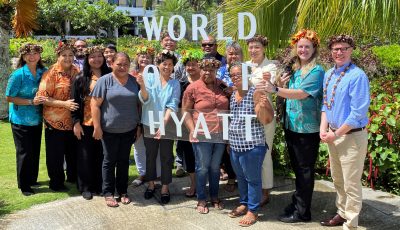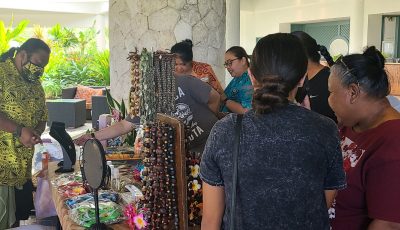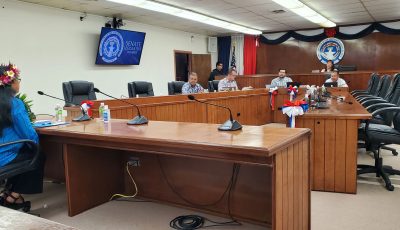MORE THAN 3 WEEKS AFTER SOUDELOR
More than 200 still in shelters
Ben Camacho, his wife Jojo, and their two daughters were rescued from their home in San Roque two days after Typhoon Soudelor tore through their home. Rescuers found them seeking refuge in the corner of their bedroom under a mattress.
Camacho is one of about 123 typhoon victims at the Office on Aging who are still in shelters three weeks and two days after Soudelor caused islandwide damage, destroying about 2,600 homes.
“My house is destroyed…We were in there at the time the typhoon came on us and we ran to the room and hid under the mattress…the wind sounded like a huge lion roaring and we saw our roof fly off,” Camacho said.
Another shelter resident said their home was destroyed and they have nowhere to go, so they continue to stay at the shelter.
“We were at Kagman High School at the time the typhoon hit us but we got transferred to the [Kagman Community Center] later,” he said.
When asked if they have already received assistance, the two families have said they did get some form of assistance but the lack of a means to rebuild their destroyed homes would mean a longer stay at the shelters because of their children.
The Public School System and the Department of Community and Cultural Affairs opened up their facilities to homeless families soon after the typhoon, with the numbers fluctuating from 400 to 500 individuals almost everyday.
Since then, PSS schools that were being used as shelters have been closed down in preparation for the start of classes and shelterees were moved to two facilities, the Office on Aging building and the Kagman Community Center.
Recently DCCA opened up a third shelter on Capital Hill at the Arts Council building.
According to shelter representatives, the Arts Council houses about 50 individuals, KCC has about 57, and the Aging Office has about 123, for a total of 230 individuals that remain in shelters.
DCCA shelter representatives said that they provide power at these locations.
Individuals that require special attention are also being housed at shelters. These are usually hospital patients, persons with disabilities, or dialysis patients. One staff from the Arts Council said they are currently housing several that require oxygen use and a dialysis patient.
However, DCCA only maintains the shelters 24/7 but doesn’t provide meals.
The American Red Cross-NMI Chapter used to provide the meals but it is also now serving the community in general.
DCCA representatives at the shelter also said that there isn’t a scheduled date when they will leave or close the areas, but they are there to provide help when it is needed.
Calls made to DCCA Secretary Laura Ogumoro were not answered as of press time.



























